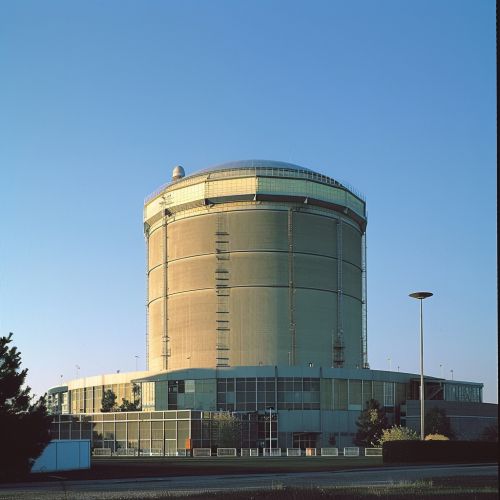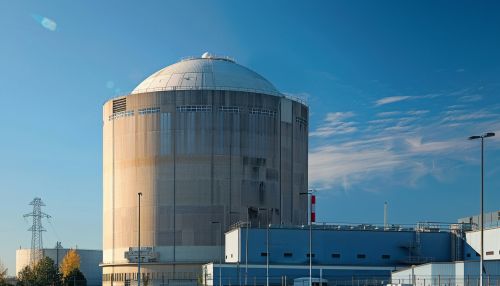Nuclear energy
Introduction
Nuclear energy, also known as atomic energy, is the energy released during nuclear reactions or radioactive decay. This form of energy is generated by reactions that involve changes in an atom's nucleus, where the change in energy is often substantial due to the binding energy in the nucleus.
History
The concept of nuclear energy was first explored in the early 20th century. In 1938, German chemists Otto Hahn and Fritz Strassmann, along with Austrian physicist Lise Meitner, discovered nuclear fission, the process by which the nucleus of an atom splits into two or more smaller nuclei, along with a few sub-atomic particles and a large amount of energy.


Nuclear Fission
Nuclear fission is the primary process that fuels nuclear reactors and atomic bombs. In this process, the nucleus of a heavy atom, such as uranium or plutonium, is split into two or more smaller nuclei, along with a few sub-atomic particles and a large amount of energy. The energy released in fission is due to the fact that the total mass of the resulting particles is less than the mass of the original nucleus, and the difference in mass is converted into energy according to Einstein's theory of relativity.
Nuclear Fusion
Nuclear fusion, on the other hand, is the process by which two light atomic nuclei combine to form a heavier nucleus. This process releases a large amount of energy and is the process that powers the sun and other stars. However, achieving nuclear fusion for power generation on Earth has proven to be a significant challenge due to the high temperatures and pressures required.
Nuclear Power Plants
Nuclear power plants use the heat generated from nuclear fission in a contained environment to convert water to steam, which powers generators to produce electricity. The operation of a nuclear power plant is similar to that of a thermal power station, where heat is used to generate steam which drives a steam turbine connected to a generator which produces electricity.
Nuclear Fuel Cycle
The nuclear fuel cycle includes the steps to prepare uranium for use in a reactor, the operation of the reactor, the treatment of the used fuel after it has been removed from the reactor, and the final disposal of the waste. The cycle starts with the mining of uranium and ends with the disposal of nuclear waste.
Safety and Accidents
Safety in nuclear power plants involves many layers of protection including the design of the plant, the training of personnel, the regulatory framework, and the emergency response capabilities. Despite these measures, there have been a number of notable nuclear accidents, such as the Chernobyl and Fukushima accidents, which have led to significant environmental and health impacts.
Environmental Impact
While nuclear energy produces no carbon dioxide during operation, the processes for mining, refining, fabricating, and disposing of the fuel all produce emissions. Additionally, nuclear power plants use large amounts of water for cooling and produce large amounts of thermal pollution and nuclear waste.
Future of Nuclear Energy
The future of nuclear energy is a subject of much debate. Some believe that nuclear power, as a low-carbon technology, has a major role to play in mitigating climate change. Others argue that the risks associated with nuclear power, including the potential for accidents and the challenge of nuclear waste disposal, make it an unsuitable option.
